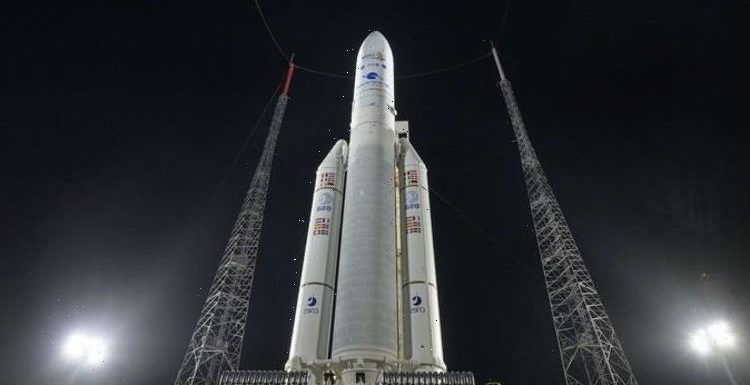
Nasa prepares the James Webb Space Telescope for launch
We use your sign-up to provide content in ways you’ve consented to and to improve our understanding of you. This may include adverts from us and 3rd parties based on our understanding. You can unsubscribe at any time. More info
Although Christmas Day would see most people tucked under a pile of wrapping paper, scientists will today gather around a platform in French Guiana. There, attached to a European Ariane rocket, is the James Webb Space Telescope, a feat of mechanical engineering and one-of-a-kind achievement. In the next few hours, operators will conclude 30 years of work as they propel the $8 billion (£5.9 billion) telescope into orbit.
What is the James Webb Space Telescope?
The James Webb telescope builds on the success of its predecessor, the Hubble.
NASA launched the Hubble in 1990 as an orbital observatory used by astronomers to explore the universe.
The tool captures a spectrum of wavelengths to deliver pictures of deep space, including visible, ultraviolet and infrared.]

Hubble launched in 1990, and its 31-year lifespan ends in 2021, meaning the James Webb will leave Earth to replace it.
The new telescope is more than double in size, with mirror panels of 6.5 metres towering over Hubble’s 2.4 and 100 times more powerful.
But it is lightweight, with a mass of approximately 6,200kg compared to Hubble’s 12,200kg and is capable of operating at -230C while its predecessor could only function at 20C.
In action, the James Webb will peer much deeper into the cosmos during its 10-year lifespan and, consequently, into the universe’s distant past.
When does the James Webb Space Telescope launch?
The James Webb is having a Christmas Day launch from its perch in French Guiana, a tropical nation on the South American coast.
Technicians and engineers are prepping for launch at the Kourou spaceport early in the morning.
The rocket will depart at 9am local time, 12.20pm GMT for British space fans.
NASA has a live stream running from 6am EST (11am GMT) on its Twitter, YouTube, Twitch, Facebook and Daily Motion accounts.
While it should come as a celebratory moment for most of those involved, it also presents a nerve-wracking opportunity.
The telescope is piggybacking on an Ariane 5, a 777 tonne (777,000kg) two-stage rocket that has failed five times in 111 launches since 2003.
The controlled explosion that will propel it into space is just one phase of the launch, as the telescope must then perfectly unfold itself or risk loss of function.
Why is the James Webb Space Telescope so important?
The James Webb provides astronomers with a means to travel back in time.
Space is not as it seems, as people can only see objects after their light has travelled to their eyes.
Light from the Sun takes eight minutes to reach Earth, so people see the star as it appeared then.
The more distant a space object is, the longer its light takes to reach the Earth.
The James Webb’s power allows it to receive light from objects named pioneer stars that formed billions of years ago.
They are saturated deep space with the chemicals that would support planets, and eventually, life.
As the James Webb observes these, the telescope will be looking up to 13 billion years into the universe’s shared past.
Source: Read Full Article